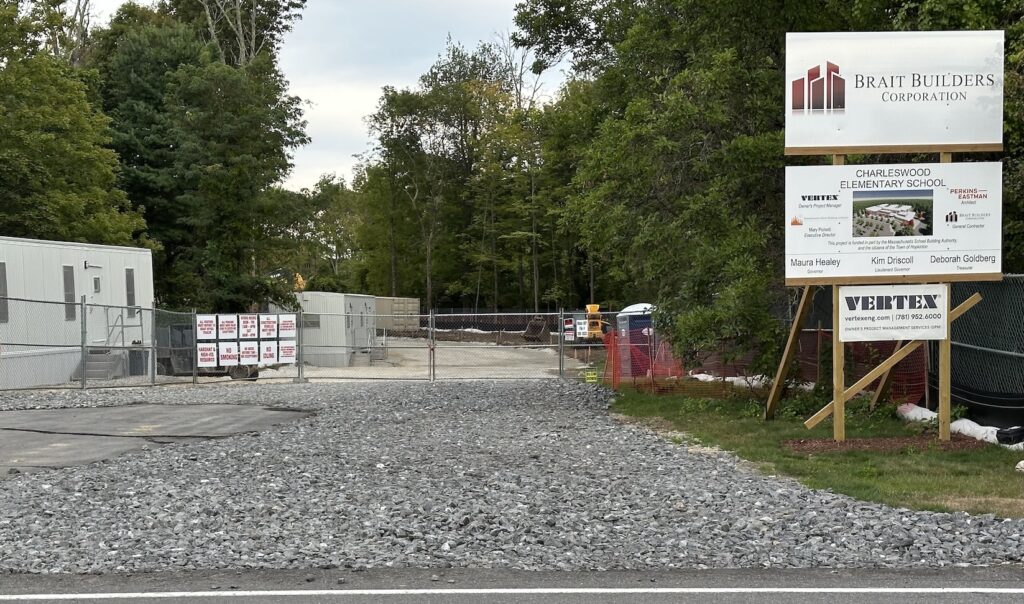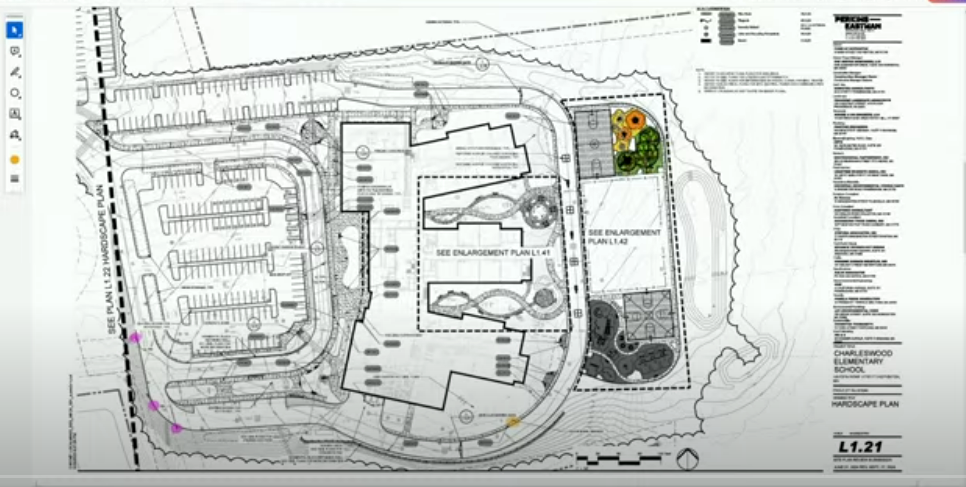Jon Graziano, chair of the Elementary School Building Committee, credited “extensive analysis, constant communication, different methods of public engagement and the ability to answer questions” as factors leading to a successful property tax override vote regarding the Elmwood School project.
On Nov. 28, residents approved the debt exclusion on the Special Town Election ballot with a 995-634 vote (preliminary results). On Nov. 13, 72% of Town Meeting voters approved the $158 million school project, which will serve students in Grades 2-4.
The new Elmwood School is expected to receive reimbursement from the Massachusetts School Building Authority (MSBA) of $61.5 million and rebates from MassSave and the Inflation Reduction Act estimated at $1.7 million and $4 million, respectively.
At its meeting Wednesday, the ESBC reflected on the votes, with Graziano adding that residents supported the school after seeing the committee “did the work of vetting solutions” over the past few years.
Graziano said he heard from residents who were unsure how they were going to vote going into Town Meeting but were swayed by the presentation and analysis to vote in favor.
Vice chair Tiffany Ostrander called Graziano “an awesome leader” who got the word out via numerous channels. She thanked member Bill Flannery, also on the Appropriations Committee, for his work with the presentations.
Jeff D’Amico, Vertex’s vice president and senior project director, said the completed schematic design represented 30% of the work. The next phase, design development, will run through the spring of 2024 and will represent 50% when that milestone is reached.
Permitting from the Conservation Commission and other boards will take place beginning next spring. D’Amico said the longest permitting process will come from the Massachusetts Environmental Policy Act (MEPA) Office, and that is the entity that ultimately determines when construction can start.
For now, Vertex estimates the construction contract will get approved in the second quarter of 2025, and construction itself will take 28 months. With that time frame, move-in would occur during December 2027 vacation, and school would open to students in January 2028.
D’Amico said depending on how things go with MEPA, school may open earlier, in September 2027, but he is using the more conservative timetable for now.
He said it is possible improvements to Hayden Rowe Street could start ahead of time with a second contractor.
Another issue, D’Amico said, is that the Environmental Justice Community in Ashland falls within the radius of the site, even though the project will have no impact on that town.
He said the group is not a state or federal agency but falls under the MEPA requirements and may result in one or more meetings with it.
D’Amico said that a school project Vertex did in Ashland did not trigger this measure, but the Environmental Justice Community is on the “fringe” of town, near the train station and within a mile radius of Hopkinton.
Graziano suggested the Sustainable Green Committee get involved in that process.
“Permitting is the one thing we don’t control,” D’Amico said. “We can manage the process, but this is the one wild card.”
Dan Colli, Perkins Eastman’s project manager, said a conversation with MEPA would clarify and maybe shorten the extent of permitting and what would be required.
In other business, the ESBC voted to approve contract amendments from design through closeout for Vertex (owner’s project manager) at $4,087,130 and Perkins Eastman (architect) for $11,058,663.
Contained in the latter figure are funds to drill geothermal test wells to 600 feet, the timing of which is weather dependent.
Colli said he would urge the drill rig person to go to the site, look at conditions and understand the plan as soon as possible.
The committee set its next meeting date for Jan. 16 and will meet remotely in December at a time to be announced. Town counsel first must look at what amounts to a “purchase and sale agreement” with the MSBA so that required signatures can be gathered.



















0 Comments